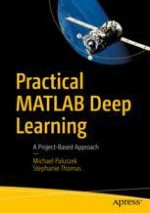
2020 | OriginalPaper | Chapter
1. What Is Deep Learning?
Authors : Michael Paluszek, Stephanie Thomas
Published in: Practical MATLAB Deep Learning
Publisher: Apress
Activate our intelligent search to find suitable subject content or patents.
Select sections of text to find matching patents with Artificial Intelligence. powered by
Select sections of text to find additional relevant content using AI-assisted search. powered by